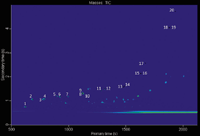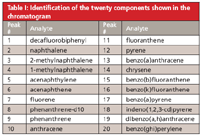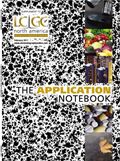Analysis of PAHs in Infant Formula Using QuEChERS Extraction and Comprehensive Two-Dimensional Gas Chromatography (GCxGC)
The QuEChERS method of food sample preparation was used in conjunction with comprehensive two-dimensional gas chromatography time-of-flight mass spectrometry (GCxGC–TOFMS) to successfully identify PAH contaminants spiked in liquid commercial infant formula.
Cory Fix, LECO Corporation
The QuEChERS method of food sample preparation was used in conjunction with comprehensive two-dimensional gas chromatography time-of-flight mass spectrometry (GC×GC–TOFMS) to successfully identify PAH contaminants spiked in liquid commercial infant formula.
PAHs are widespread carcinogenic pollutants that are naturally found in crude oil and coal deposits but are primarily formed through incomplete combustion processes. Due to the health risks posed, identifying their presence in foodstuffs is of great importance. The QuEChERS (1) method is used because it is a fast and inexpensive food matrix extraction method, and the LECO Pegasus 4D (GC×GC-TOFMS) was used to isolate the PAHs from matrix interferents and produce EI mass spectra for identification.
Experimental Conditions
Qsep Q150 extraction salts (Restek #26237) and dSPE clean-up tubes (Restek #26124) were used. The PAH standards included internal standard phenanthrene-d10 (#31045), EPA Method 8310 PAH Mixture (#31841), and decafluorobiphenyl (#31842). To spike the samples, 100 µL of each standard were mixed with the infant formula.
The column set used was a 30 m × 0.25 mm × 0.25 µm Rxi-1ms primary column and a 1 m × 0.10 mm × 0.10 µm RTX-17 secondary column. The main oven temperature program was a 30 s hold at 50 °C followed by a 10 °C/min ramp to 300 °C held for 10 min. The secondary oven mirrored the ramp at +10 °C. The modulation period was 5 s with 0.80 s hot pulse per stage.
Results
While an analysis using an additional dSPE clean-up was performed for comparison, the GC×GC analysis of the sample without dSPE clean-up separated the PAHs from the matrix without issue (Figure 1). All 20 components of interest were isolated from the infant formula matrix. Based on a S/N = 5, the detection limits of most of the PAHs were extrapolated to be in the 0.5–6 ppb range.

Figure 1: GCÃGC TIC contour plot of the PAH-spiked infant formula sample. Only confi rmed PAH components are labeled with peak markers and identifi ed in Table I.
Conclusions
The combination of QuEChERS extraction and GC×GC-TOFMS is an excellent method for detecting and identifying PAH contaminants in liquid infant formula. This is a fast process, as the total procedure (extraction and analysis) was completed within the space of an hour.

Table I
References
(1) http://www.restek.com/pdfs/805-01-002.pdf
LECO Corporation
3000 Lakeview Avenue, St. Joseph, MI 49085
tel. (269) 985-5496, fax (269) 982-8977
Website: www.leco.com


.png&w=3840&q=75)

.png&w=3840&q=75)



.png&w=3840&q=75)



.png&w=3840&q=75)
















